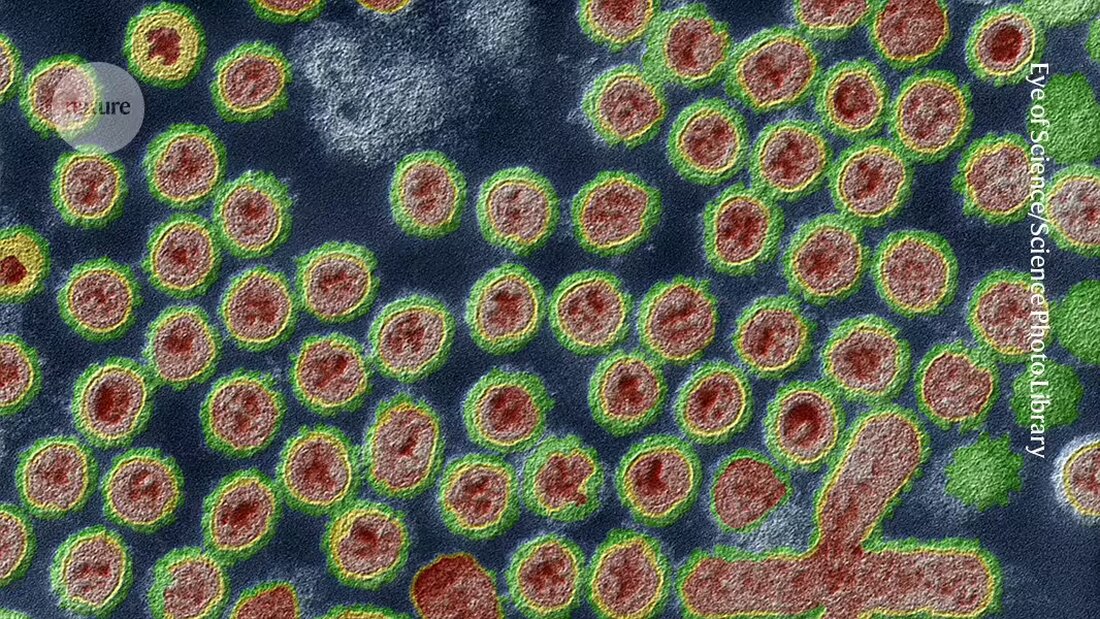所有人的目光都集中在密苏里州。
研究人员正在焦急地等待中西部州关于神秘禽流感感染的数据,该感染者与潜在的携带该疾病的动物没有已知的接触。这些数据可以揭示美国是否正在 奶牛中的禽流感疫情已经达到了一个可怕的转折点:出现了一种能够在人与人之间传播的病毒。
到目前为止,有关神秘感染的数据很少:H5N1 病毒基因组序列的小片段和不完整的感染时间线。令人担忧的是,没有密苏里州奶牛场报告鸟类流感爆发;这可能是因为确实没有感染,或者因为该州不要求农民对他们的奶牛进行病毒检测。
“令人担心的是,该病毒正在社区内以低水平传播,而这是我们第一次检测到它,”费城宾夕法尼亚大学佩雷尔曼医学院的病毒免疫学家斯科特·亨斯利 (Scott Hensley) 说。 “没有数据表明情况确实如此,但这就是恐惧。”
神秘病例
9月6日,密苏里州公共卫生官员和美国疾病控制与预防中心(CDC)宣布,该州一名成年人出现胸痛、恶心、呕吐和腹泻等症状,并因其他医疗状况入院治疗。该人的病情并不严重,并且已经从感染中康复。检测显示其为H5N1流感,通常称为禽流感。
自3月份以来,当H5N1病毒首次在美国奶牛中检测到时,已有十几起人类感染病例,可追溯到与受感染动物(包括牛和鸟类)的接触。密苏里州的案件之所以引人注目,是因为调查人员没有发现这样的联系,也没有发现与未加工食品的联系,例如生奶,来自可能受感染的牲畜。
这提出了这种病毒可能已经进化到不仅可以感染人类,而且可以在人与人之间传播的可能性。如果是这样,这会增加病毒席卷人类的风险,可能引发危险的爆发。
但这并不是唯一的可能性,曼哈顿堪萨斯州立大学的兽医病毒学家 Jürgen Richt 警告说。 “这是一个神秘的案件,”他说。 “所以你必须把网撒得更大一些。也许他们清理了家里的喂鸟器。他们去过州集市吗?他们吃了什么样的食物?”
9月13日,密苏里州的病例引起了更多关注,当时美国疾病控制和预防中心宣布,与住院患者有密切接触的两名人员也在同一时间患病。其中一人没有接受流感检测;亨斯利说,这个测试结果令人鼓舞,但并不明确,因为样本可能是在个体的病毒水平太低而无法检测时收集的,例如在他们开始康复之后。下一步的关键是测试所有三人是否有针对已感染牛的 H5N1 禽流感病毒株的抗体。这些抗体,特别是在两个接触者中,将是过去感染的明确证据。
基因组侦查
在研究人员等待抗体结果的同时,他们正在通过来自住院患者病毒样本的不完整的基因组序列数据进行组合。这可能会产生任何迹象表明该病毒可能已经适应了人类宿主。然而,搜索是一个挑战:样本中病毒 RNA 的含量非常低,以至于一些研究人员完全避免分析序列。
“我希望看到的是更高的质量,”明尼阿波利斯明尼苏达大学医学院的病毒免疫学家 Ryan Langlois 说。 “我对从部分序列中解释任何内容都感到非常紧张。”
但是对于 Hensley 来说,序列片段的一个特征立即凸显出来:形成称为血凝素(H5N1 中的“H”)的流感蛋白的氨基酸串中的单个变化。该蛋白质位于流感病毒的表面,帮助病毒结合并感染宿主细胞。它也是流感疫苗的目标。
亨斯利发现的变化创造了一个大糖分子可以结合的位点。他说,这种糖可以充当雨伞,保护其下方的血凝素。他的实验室在其他流感病毒株中研究了这一变化,它可能会影响病毒与宿主细胞的结合方式,以及正在开发的针对牛体内发现的 H5N1 病毒的疫苗是否能够识别并有效对抗密苏里州检测到的病毒。
监测差距
即使序列可用,研究人员也不清楚哪些基因变化可能使禽流感病毒更好地感染 威斯康星大学麦迪逊分校的病毒学家 Yoshihiro Kawaoka 表示,人类或通过空气传播。之前的研究1,2表明,编码负责复制病毒基因组的蛋白质的基因的变化对于病毒在哺乳动物细胞中复制可能至关重要。但研究人员无法对密苏里州分离株的该基因进行测序。
与此同时,CDC 已与美国的五家公司签订了合同,为 H5N1 和其他新出现的病原体提供检测服务。佐治亚州亚特兰大埃默里大学的病毒学家西玛·拉克达瓦拉 (Seema Lakdawala) 表示,还需要改进对牛的检测,以便公共卫生官员知道该国哪些地区存在人类感染情况。在美国,大多数牛的检测都是在州一级进行监管的,但只有少数几个州要求对一些奶牛场进行常规检测。
她说,公共卫生工作者仍然不清楚美国有多少牛群感染了 H5N1 病毒,或者牛在感染禽流感后是否具有免疫力或可能再次感染。
在研究人员等待更多信息时,Hensley 警告道 防止恐慌。 “这可能仍然是一次性案件,而不是更大事件的迹象,”他说。

 Suche
Suche
 Mein Konto
Mein Konto

